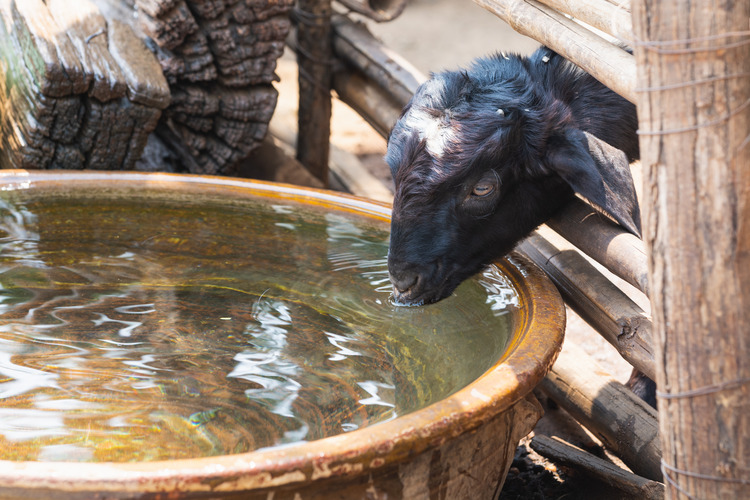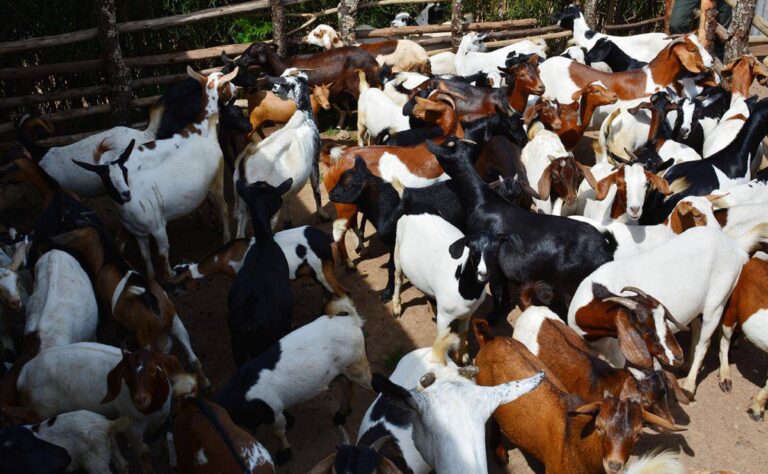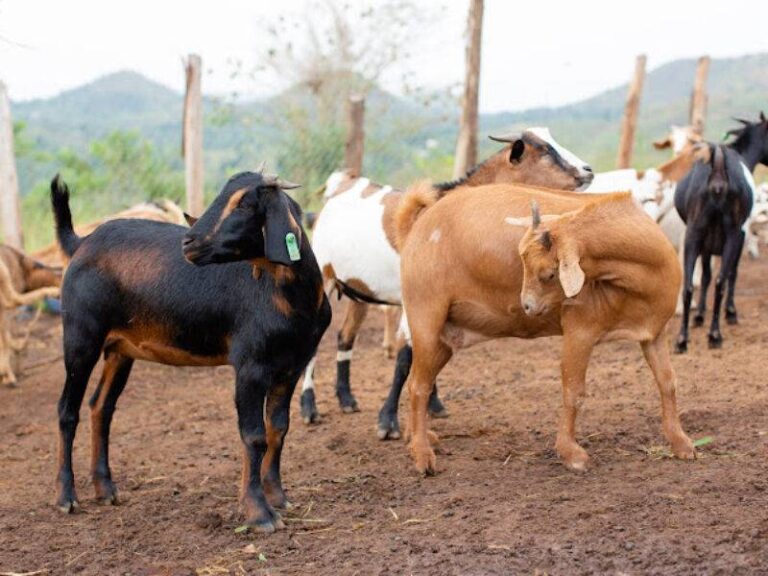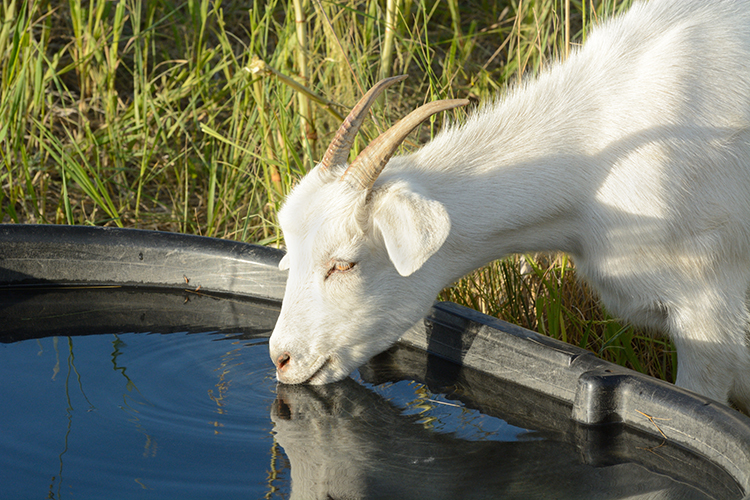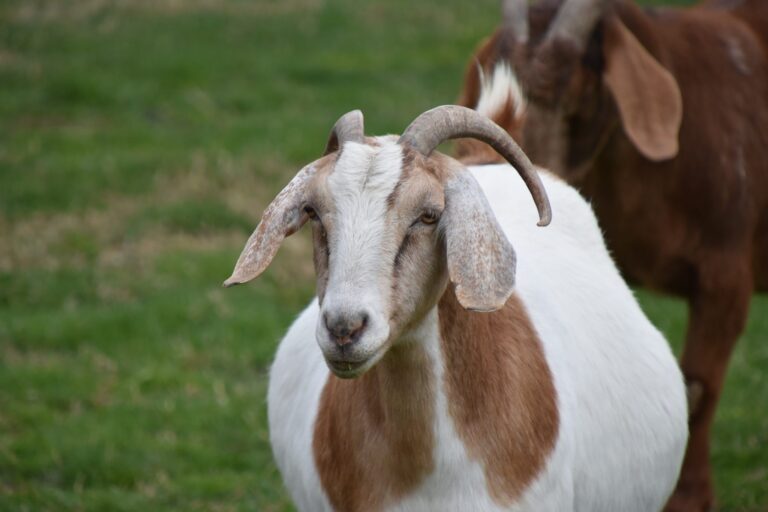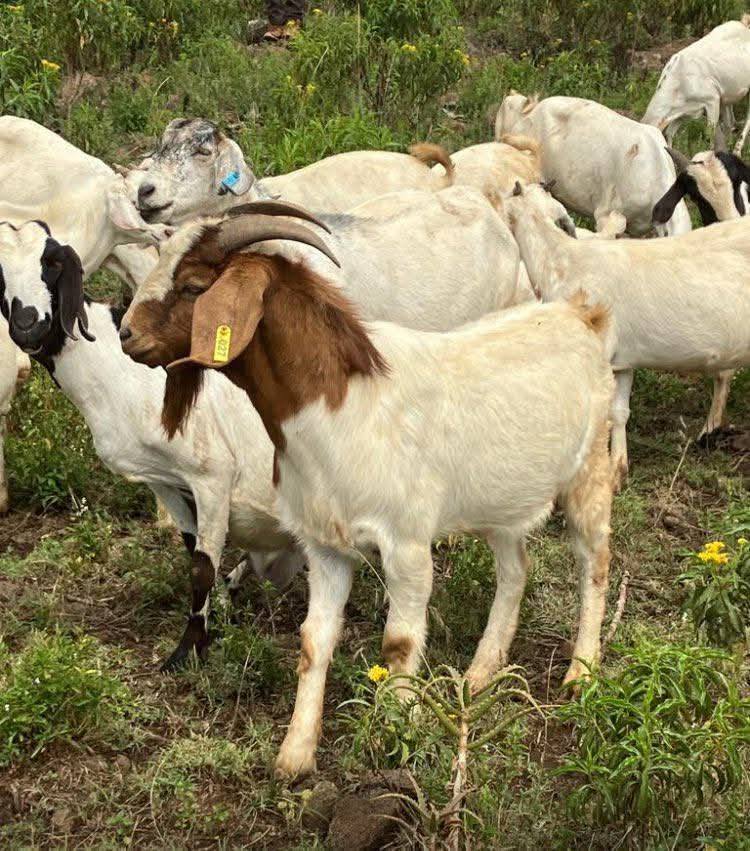Feeding goats may seem straightforward. You know, offer them hay, grains, or let them graze. But behind the scenes, many farmers unintentionally make costly nutritional errors that lead to slow growth, disease, low fertility, or even death.
These mistakes are often subtle and happen even on well-run farms. This guide outlines the most common feeding mistakes in goat farming and, more importantly, how to avoid or fix them.
1. Overfeeding Grains and Concentrates
Goats enjoy grains like corn, wheat, and soybean meal but their digestive systems are built for fiber-rich forage, not high-starch diets. Overfeeding grain can cause acidosis, a dangerous drop in rumen pH that leads to bloating, diarrhea, laminitis, or sudden death.
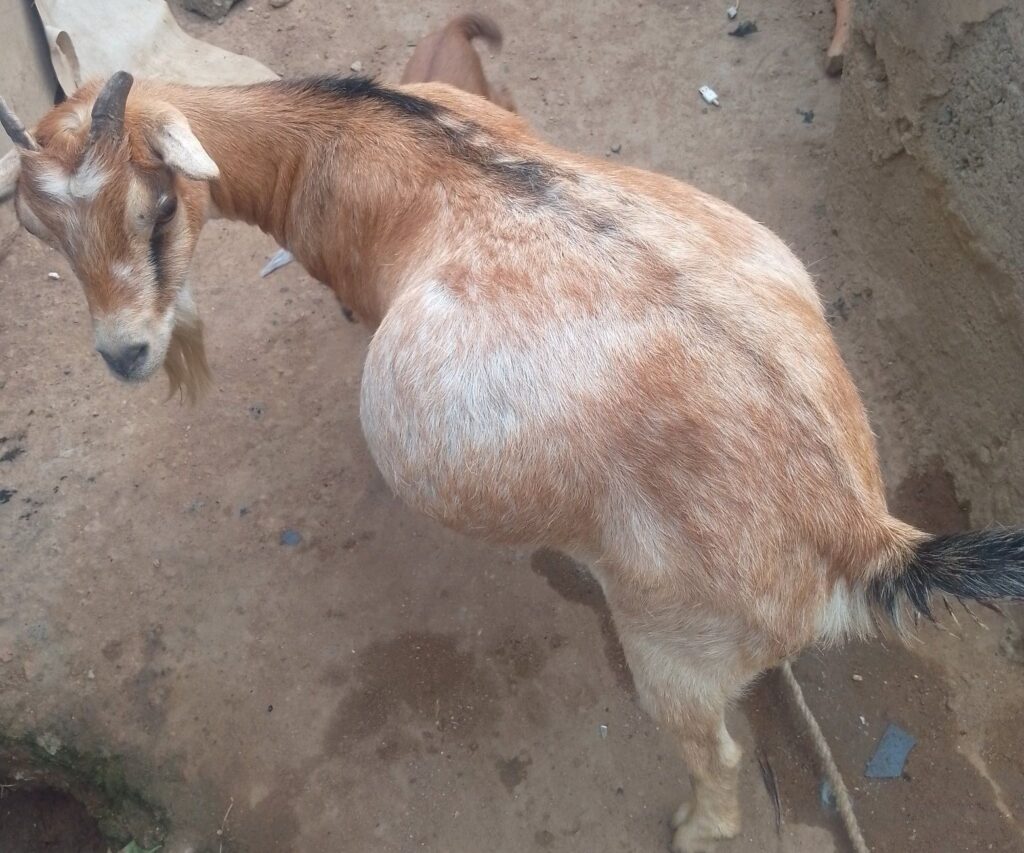
Fix: Limit grain feeding to no more than 1.5–2% of a goat’s body weight per day. Always pair grain with good-quality roughage like hay or browse to buffer the rumen and prevent acid buildup. Introduce grain gradually, especially to kids and dry does.
2. Feeding Moldy or Spoiled Feed
Goats are sensitive to mold toxins (mycotoxins) found in old or improperly stored hay, silage, or concentrates. These toxins can cause abortions, poor appetite, neurological symptoms, or chronic digestive issues.
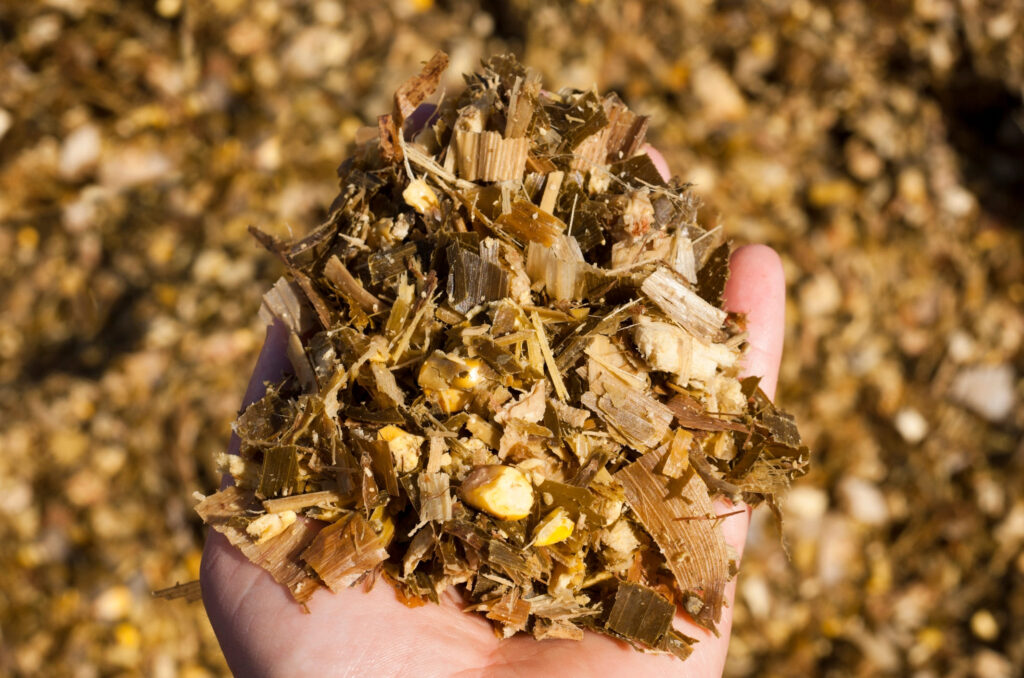
Fix: Store all feed in dry, well-ventilated areas. Avoid feeding hay or grains that smell musty or show signs of mold or discoloration. If using crop by-products like cassava or brewers’ grains, ensure they are well-dried or properly fermented.
3. Ignoring Mineral Deficiencies
Goats require minerals like copper, selenium, calcium, and phosphorus to stay productive. Many farmers assume their feed or pasture covers this need, but mineral deficiencies often go undetected until goats show poor growth, reproductive failure, or coat problems.
Fix: Provide free-choice loose mineral supplements made specifically for goats. Avoid using cattle or sheep mixes, as they may lack essential nutrients (or in the case of sheep, avoid copper entirely). Monitor signs of deficiency and adjust your mix if necessary.
4. Feeding a One-Size-Fits-All Diet
All goats are not the same. Pregnant does, growing kids, bucks, and milking goats have different nutritional needs. Feeding them all the same hay and ration may result in stunted growth, low milk yield, or underfed kids.
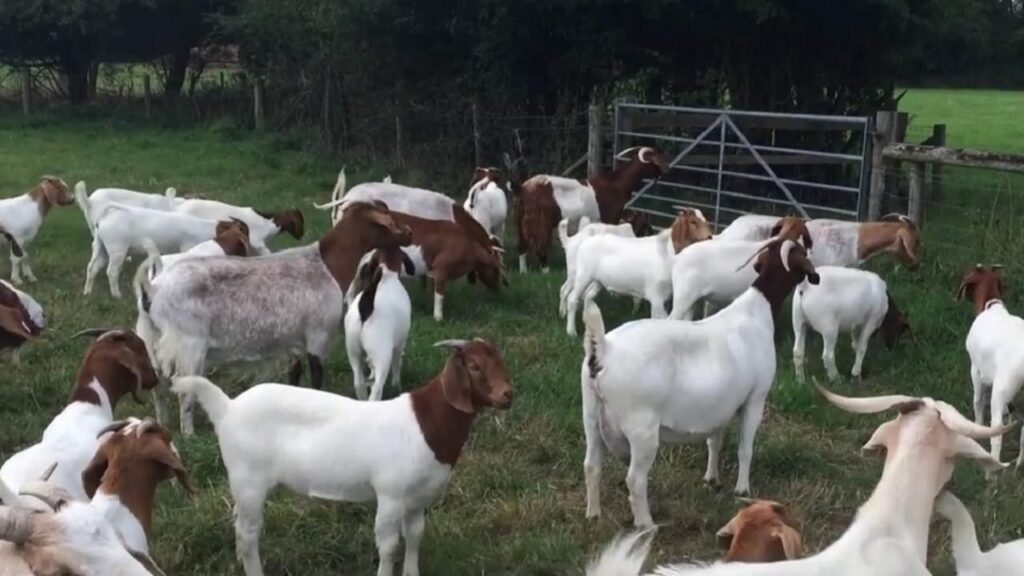
Fix: Separate your herd into groups based on age and function. Provide higher energy and protein rations to lactating does and growing kids, while bucks and dry does can thrive on moderate forage with minimal concentrate.
5. Lack of Clean, Fresh Water
Water is essential for digestion, milk production, and body temperature control. Dirty or inadequate water reduces feed intake, slows growth, and increases health risks.
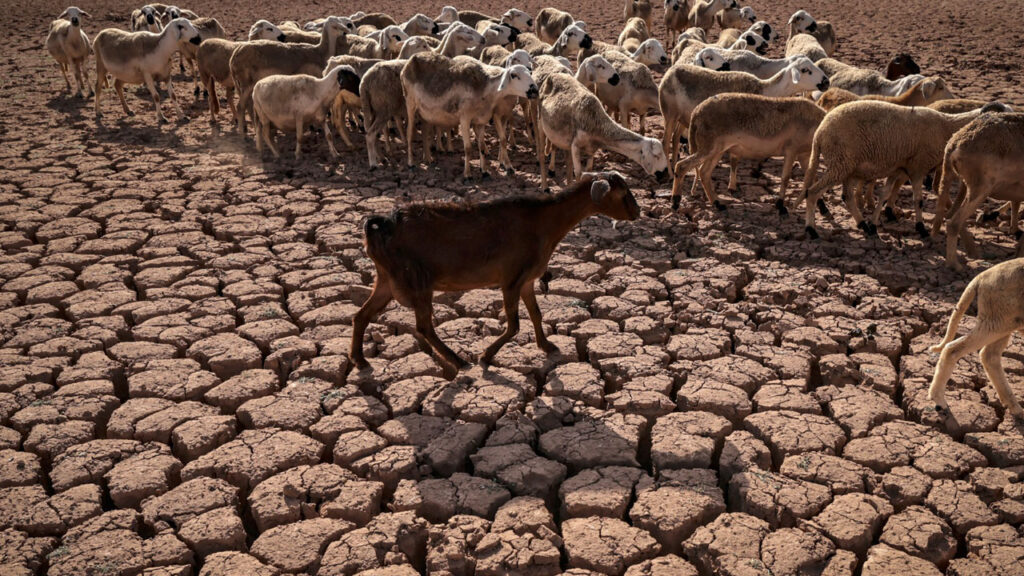
Fix: Ensure constant access to clean, cool water. Change water daily, clean troughs regularly, and provide multiple water points if goats are spread across paddocks or barns.
6. Feeding Only Grass or Pasture Without Browse
Goats are natural browsers, not grazers like sheep or cows. Diets made entirely of grasses may be low in minerals, protein, and fiber variety. This can lead to low fertility, poor coat condition, and digestive sluggishness.
Fix: Allow goats to access trees, shrubs, and vines, or offer cut branches (tree fodder) like mulberry, gliricidia, or leucaena. A mix of pasture and browse supports natural feeding behavior and improves nutrition.
7. Not Adjusting Diet Seasonally
What works during the rainy season may not be suitable in the dry months. During drought or winter, pasture quality declines, and relying on it alone leads to weight loss and nutritional stress.
Fix: In dry or cold seasons, supplement with good-quality hay, silage, or crop residues. Increase concentrate levels for pregnant or lactating does. Always monitor body condition and adjust rations to maintain performance.
8. Feeding Too Much Legume Hay Without Balance
Legume hays like alfalfa are high in protein and calcium. While excellent for growing kids and milking does, excessive feeding can cause bloat or calcium imbalance, especially in late-pregnant does or bucks.
Fix: Mix legume hay with grass hay or straw to balance nutrients. Introduce it slowly and observe for signs of bloat (swollen belly, discomfort). Offer baking soda free-choice as a natural bloat buffer.
9. Relying Solely on Commercial Feed
While convenient, commercial pellets or rations are not a complete substitute for fiber-rich forage. Feeding only processed feed can lead to rumen atrophy, digestive issues, and high input costs.
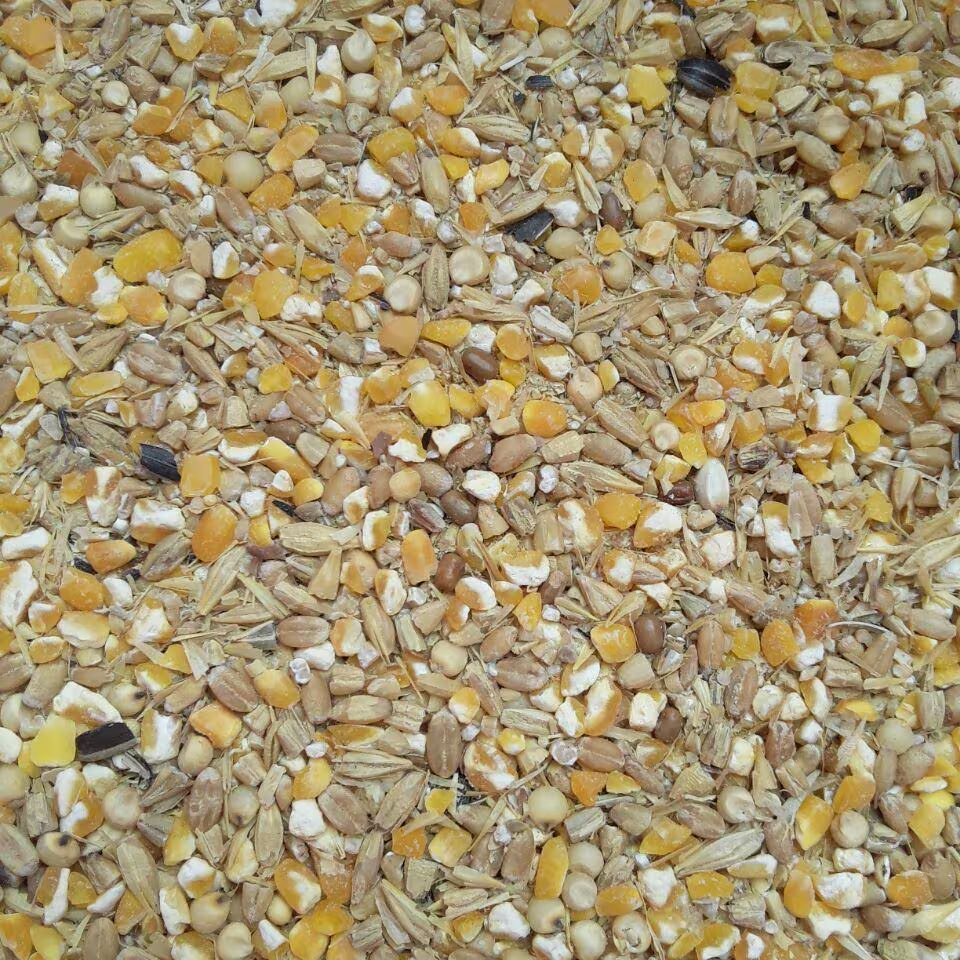
Fix: Use commercial feed as a supplement, not the base. Prioritize hay, browse, and natural forage. If using pellets, ensure they contain adequate fiber or mix them with hay or chopped straw.
10. Changing Diets Abruptly
Goats have sensitive rumens that rely on stable microbial populations. Sudden diet changes can disrupt digestion, leading to bloating, diarrhea, and reduced feed efficiency.
Fix: Introduce any new feed slowly over 7–10 days, mixing it with the old feed in increasing proportions. This applies to switching between types of hay, adding grain, or rotating goats onto lush pasture.
Wrapping Up
Feeding mistakes are rarely deliberate; they result from routine habits, misinformation, or a lack of adjustment.
But once you understand how goats digest and what they need, you can feed with purpose, not just convenience. Observation, consistency, and planning are your best tools in building a cost-effective, health-supportive nutrition program.
Related:

